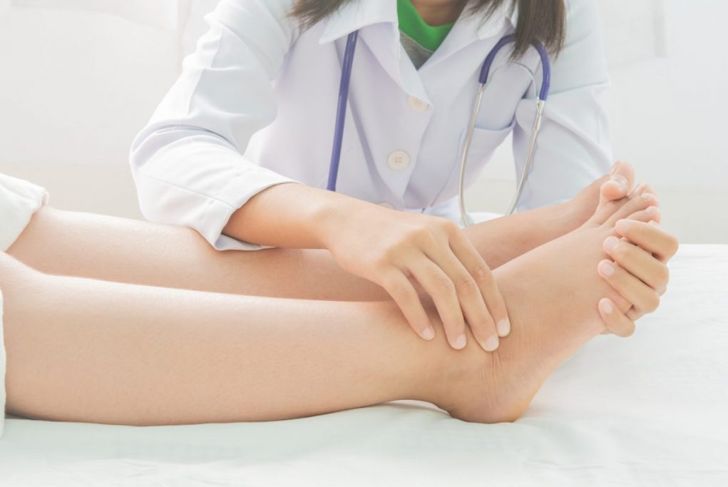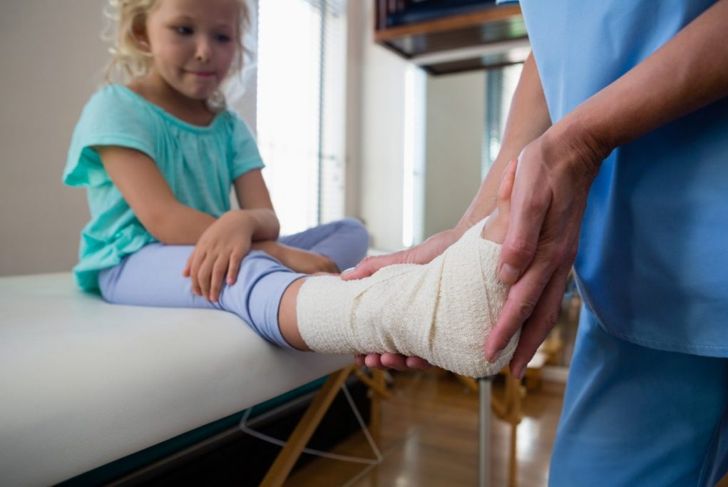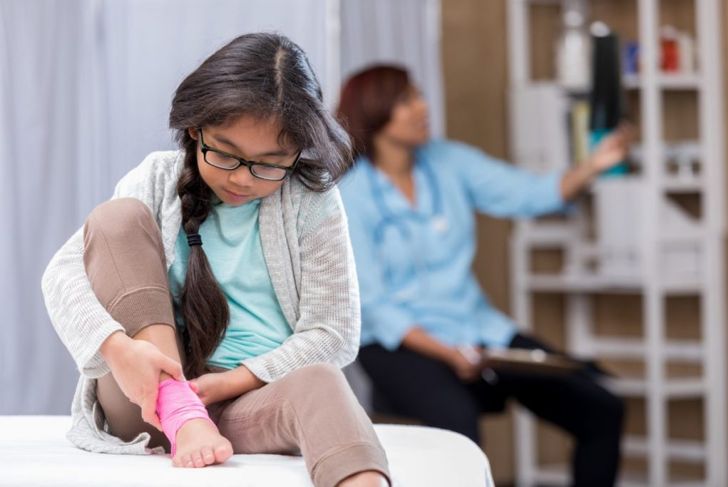If a child complains about pain in their heels, it could be a symptom of Sever’s disease, one of the most common causes of heel pain in young children and adolescents. Usually, children develop Sever’s disease following athletic activities, though it can occur in less active children, as well. The condition is caused by an inflamed growth plate in the heel. Though the pain can be intense, Sever’s disease is rarely serious. Most treatment options include over-the-counter medications, rest, and a change of footwear.
Symptoms
The main symptom of Sever’s disease is pain or soreness originating from the heel of the foot. Usually, the pain begins at the back and spreads to the sides or bottom of the heel. If the child continues activities requiring walking or running, the pain can worsen. Some children with Sever’s disease experience swelling and redness around the heel. Walking often feels painful and stiff. Children with Sever’s disease may begin to walk on tiptoes or with a limp to avoid placing pressure on their heel.
Cause of Sever’s Disease
In general terms, Sever’s disease results from trauma to the growth plate of the heel, usually through excessive use or force. Adolescents undergo many small growth spurts throughout their development. During a growth spurt, the heel bone may grow faster than the tendons and muscles in the leg. The heel stretches these tissues and places them under immense strain. When the heel experiences any additional stress or trauma, this leads to the swelling and pain of Sever’s disease.
Dangerous Activities
Many activities place children at risk for Sever’s disease. Running or jumping are two basic exercises that cause significant strain on the heel. Many sports can also lead to Sever’s disease, though basketball, soccer, and gymnastics are the most common. In a study of injuries among soccer players between the ages of nine and 19, Sever’s disease accounted for 2% of injuries. Children under the age of 11 were most likely to have the disease. Beyond athletic activities, even standing for long periods places a child at risk.
People at Risk
Early studies suggest boys are more likely to develop Sever’s disease than girls. However, modern research shows this discrepancy was likely due to fewer girls participating in athletic activities. Children who perform activities on hard surfaces or wear ill-fitting shoes are at higher risk, as are overweight children and those with obesity. Children born with physical traits such as flat arches, high arches, pronated feet, or one leg that is longer than the other also have a higher chance of developing Sever’s disease.
Prevention
Parents and guardians can take steps to reduce the risk of Sever’s disease. However, complete prevention is not realistic, as the development of the growth plate is a natural consequence of growth. Adults should ensure that their children are wearing properly-fitting footwear. Guardians of children who frequently participate in sports or other athletic events should make sure the children rest their feet following activities. Insoles or orthotics may reduce pressure on the heel.
Diagnosis
It is a fairly simple process for doctors to diagnose children with Sever’s disease. After considering medical history and symptoms, the doctor may complete a “squeeze test” to examine the heel itself. If the child expresses pain or discomfort while the doctor squeezes the heel, it is likely Sever’s disease. To rule out other possible conditions, physicians may ask children to stand on their tiptoes. Imaging tests such as x-rays are not typically part of the Sever’s disease diagnostic process, though doctors may use them to rule out fractures.
Treatment
There is a lack of research into Sever’s disease treatments, so medical professionals usually opt to employ multiple treatment options simultaneously. The initial goal is to reduce the pain and tenderness in the heel. Often, doctors can achieve this by reducing the swelling and inflammation in the area. Rest and ice therapy ensure that swelling improves and the condition doesn’t worsen. In some cases, doctors may prescribe nonsteroidal anti-inflammatory drugs. Additional treatments may involve compressions stockings or assigned stretches.
Management and Recovery
As long as the child remains relatively inactive, Sever’s disease recovery is straightforward. Once the pain and other symptoms subside, doctors can verify that the child is safe to return to physical activity. The recovery process can take anywhere from two to eight weeks, even with rest, ice, compression, and stretches. Generally, the earlier the child begins treatment, the faster the recovery. However, Sever’s disease can recur even following full recovery.
Preventing Recurrence
The best way to prevent Sever’s disease from recurring is to continue with preventative measures, especially ensuring the child is wearing properly-fitting shoes with heel support. Ideally, the shoes will have shock-absorbing gel or fabric in the heel. Orthotics and insoles may be necessary to protect the heel in shoes without this quality. Children should stretch their calves, heels, and hamstrings daily. If they choose to perform strenuous activities, children should do so on grass or running tracks rather than asphalt or concrete. Guardians should make sure their children get plenty of rest in the weeks after recovery.
Outcome
Because Sever’s disease relies on the size of the growth plate in relation to the surrounding muscles and tendons, it cannot return once the child has fully developed. Mature growth plates have hardened into solid bone. In most children, this occurs around the age of 15. Researchers may conduct further studies to determine the exact long-term effects of the disease, but there are no professional reports documenting any later issues.

 Home
Home Health
Health Diet & Nutrition
Diet & Nutrition Living Well
Living Well More
More




















